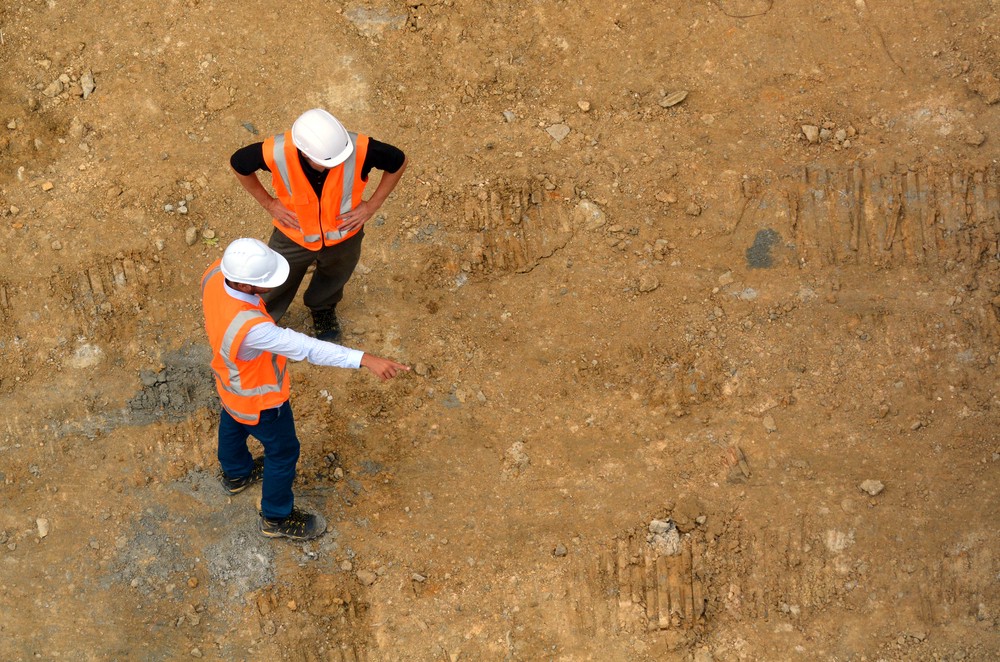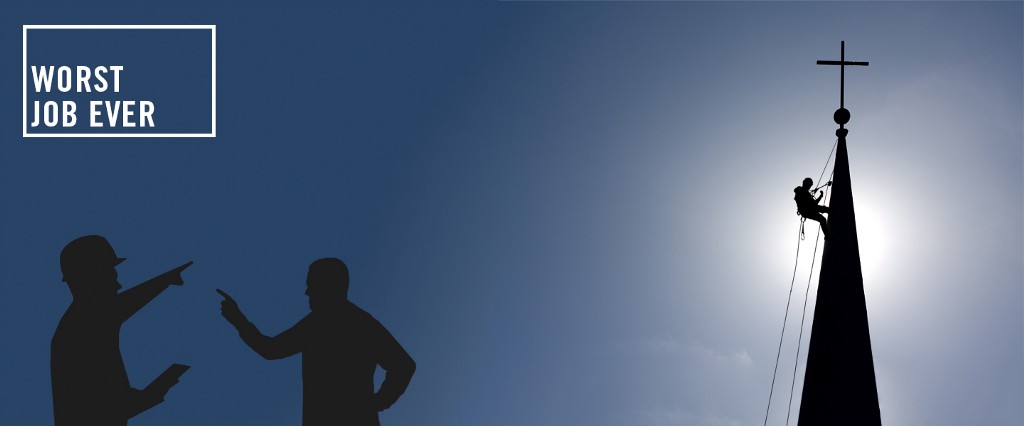Mark, 40, Southeast U.S.
Current Job: Creating 3D mockups for construction projects
Worst Job: Construction site supervisor
How I Got the Gig
It was 2009, right in the midst of the housing and financial crises, and the construction industry was in the dumps. The construction company I’d been working for had laid me off, only to rehire me weeks later.
“You’re going to build a church in this small town,” they told me. It turned out to be a $2.5 million building for the Church of Mormon. It was my first time working as a site supervisor and building a project from the ground up — I’d only worked on remodels before that — and was told the project manager would help me through the process. Unfortunately, that never happened.
The First Sign Things Were Gonna Go Bad
When we went to start the project, we noticed some of the measurements were off. Turns out the surveyor had had a massive stroke two days before he laid out our worksite. Then, the project got delayed for months. The subcontractor we hired to handle the foundation said the worksite was too muddy from all the rain — which was true, but we later found out he was part of an organized crime ring in the South known as the Dixie Mafia. He had spent 12 years in prison for witness tampering, and he found every excuse to delay our project. Almost just as bad, the lumber company kept getting our order wrong and sending us the wrong kind of wood. That delayed us another two months.

From Bad to Worse…
Still, things were kind of fine until our liaison with the Church turned on us. He protected us from one of the elder members who had worked on massive construction projects like skyscrapers and wanted to micromanage our build. He accused us of doing something illegal once the lumber problems started.
Next, we had problems with the electrician. He wanted more than was originally agreed upon to finish the job, and the Church said our company had to pay out-of-pocket. Luckily, we specialized in electrical, and just finished the work ourselves. But our relationship with the Church was highly contentious after that.
So contentious, in fact, that the Church stopped paying us. We were due to get paid once we completed different benchmarks, but they had a technicality written into the contract that allowed them to suspend pay if they were dissatisfied with how things were progressing.
We were hamstrung. We were contractually obligated to finish the project, but we weren’t getting paid and couldn’t afford to pay the subcontractors we hired. We were 80 percent done, though, and I convinced the subcontractors to finish the project for free, with the idea we’d all get paid once the job was done. Remember, this was 2009, so construction workers had to take whatever work they could get.
Rock Bottom
Once the project was finished, we had an inspection with the state building authority to get our certificate of occupancy — a document that confirms the building is up to code and can lawfully be used. We got the certificate, but the Church said it was illegitimate. They accused us of being in cahoots with the inspector, and that the job actually wasn’t done to specifications.
They kicked us off the jobsite and refused to pay. We thought about suing, but the company lawyer said it would take two years of discovery and that the litigation would have to occur in Salt Lake City, where the Church of Mormon headquarters are, as was written into the contract.
Ultimately, the project sank the company. Everything hinged on getting that final payout, which never came.
The Silver Lining
The main lesson I take away from that experience is that argument is useless unless both sides are willing to engage each other in good faith. The Church didn’t believe anything we said, and it locked us into an argument we simply couldn’t resolve. It kind of speaks to our current political climate — debate is useless unless both sides are willing to be honest and open-minded with each other.
